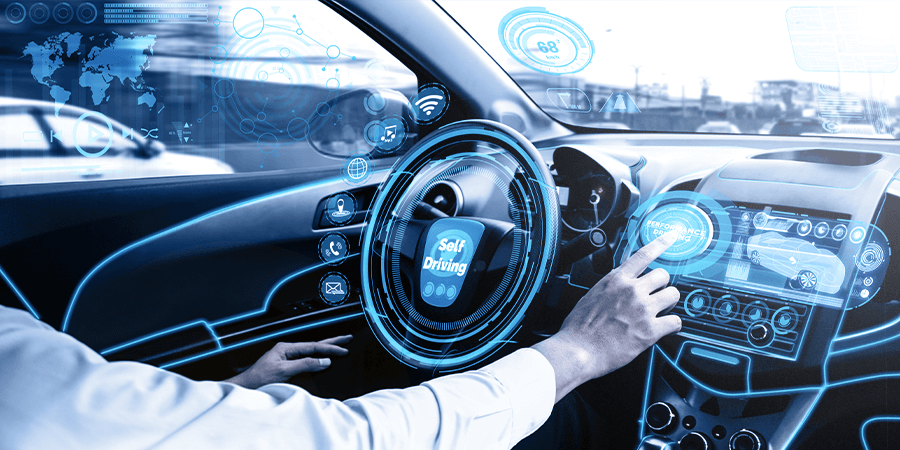Automotive Hardware In the modern automotive landscape, the term Automotive Hardware transcends the realm of nuts and bolts. It’s a symphony of precision engineering, cutting-edge technology, and innovative design that propels vehicles into the future. From the intricate sensors that read the road to the powerful processors that enable autonomous driving, automotive hardware forms the backbone of the automotive revolution.
The Brains Behind the Beauty
While the sleek exterior of a car captures our attention, it’s the automotive hardware that orchestrates the magic beneath the surface. At the heart of this hardware ecosystem lies the Electronic Control Unit (ECU), a powerful brain that coordinates various systems in the vehicle. It’s the hub where data from sensors, cameras, and radars converge, ensuring that every component works in harmony.
From the engine management system that optimizes fuel efficiency to the advanced driver assistance systems that enhance safety, the automotive hardware translates complex algorithms into seamless experiences.
From Horsepower to Data Power
In the past, horsepower was the metric that defined automotive performance. Today, it’s about harnessing the power of data. The automotive hardware of today is not only about mechanical prowess; it’s about being a data-driven powerhouse. Sensors embedded in vehicles capture a wealth of information – from road conditions to driver behavior – transforming cars into rolling data centers.
This data serves as the fuel for innovations such as predictive maintenance, where automotive hardware anticipates maintenance needs before they become issues. It’s about converting raw data into actionable insights that enhance efficiency, reliability, and performance.
Connectivity as the Cornerstone
The rise of connectivity has revolutionized automotive hardware, ushering in an era of smart vehicles. The concept of the Connected Car hinges on an intricate web of hardware components. From telematics units that transmit vehicle data to cloud servers to infotainment systems that seamlessly integrate with smartphones, connectivity transforms the driving experience.
Imagine a car that can receive real-time traffic updates, adjust its route to avoid congestion, and even communicate with other vehicles to prevent accidents. These scenarios exemplify the power of connectivity, where automotive hardware becomes a conduit for information exchange.
Pioneering Autonomous Evolution
The pinnacle of automotive hardware innovation lies in the realm of autonomous driving. This vision is realized through a symphony of hardware components: LiDAR sensors that create detailed 3D maps of the surroundings, radar systems that detect obstacles, and powerful processors that process data in real time.
These hardware components work together to create a virtual cocoon of awareness around the vehicle. It’s an intricate dance that ensures safety and navigational precision, allowing the vehicle to make split-second decisions that mirror human intuition.
Safety: The North Star
In the landscape of automotive hardware, safety reigns supreme. Advanced driver assistance systems (ADAS) are at the forefront of this commitment to safety. Radar and camera systems scan the environment, providing features like adaptive cruise control, lane departure warnings, and automatic emergency braking.
The integration of hardware and software ensures that vehicles not only enhance the driving experience but also protect drivers and passengers. It’s a testament to the role that automotive hardware plays in transforming vehicles into guardians of safety.
Sustainability and Efficiency
As the world grapples with environmental challenges, automotive hardware plays a crucial role in driving sustainability. Electric vehicles (EVs) are a prime example of this shift. Components like regenerative braking systems and high-capacity batteries are integral to the efficiency of EVs.
Additionally, advancements in lightweight materials and aerodynamic design are optimizing fuel efficiency in traditional vehicles. The evolution of automotive hardware aligns with the pursuit of a greener and more sustainable future.
The Human-Machine Interface
The evolution of automotive hardware extends beyond the vehicle itself; it’s also about transforming the way humans interact with machines. Infotainment systems, heads-up displays, and voice recognition technology redefine the driving cockpit. These hardware components create a seamless interface that prioritizes safety and user experience.
Imagine a dashboard that responds to your voice commands, allowing you to control navigation, music, and calls without taking your hands off the wheel. This blend of hardware and software converges to create an environment where technology serves as an enabler, not a distraction.
The Road Ahead: Uncharted Territories
The world of automotive hardware is on a relentless journey of innovation. As electric and autonomous technologies continue to evolve, so does the hardware that underpins them. From batteries that promise extended ranges to advanced AI processors that enhance decision-making in autonomous vehicles, the road ahead is paved with possibilities.
The convergence of with AI, connectivity, and sustainability shapes the vehicles of tomorrow. It’s a roadmap that transforms the way we drive, experience, and interact with automobiles.
Conclusion
The world of automotive hardware is a testament to human ingenuity. Engineering prowess, and the relentless pursuit of progress. It’s about turning vehicles into more than mere modes of transportation. They become extensions of our lives, partners in our journeys, and guardians of our safety.

